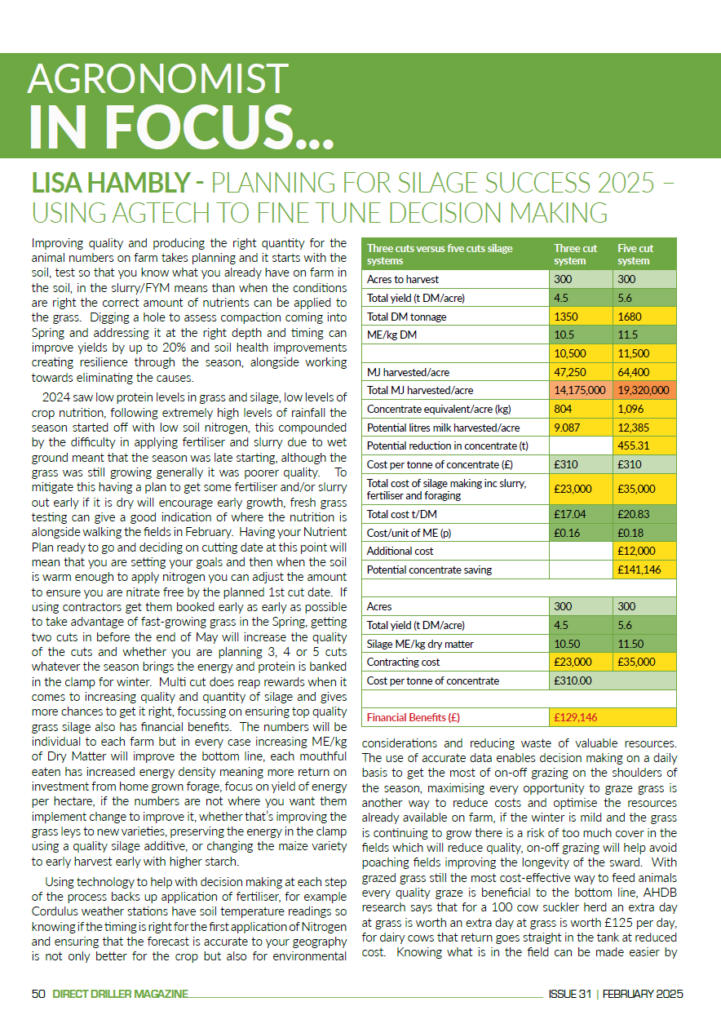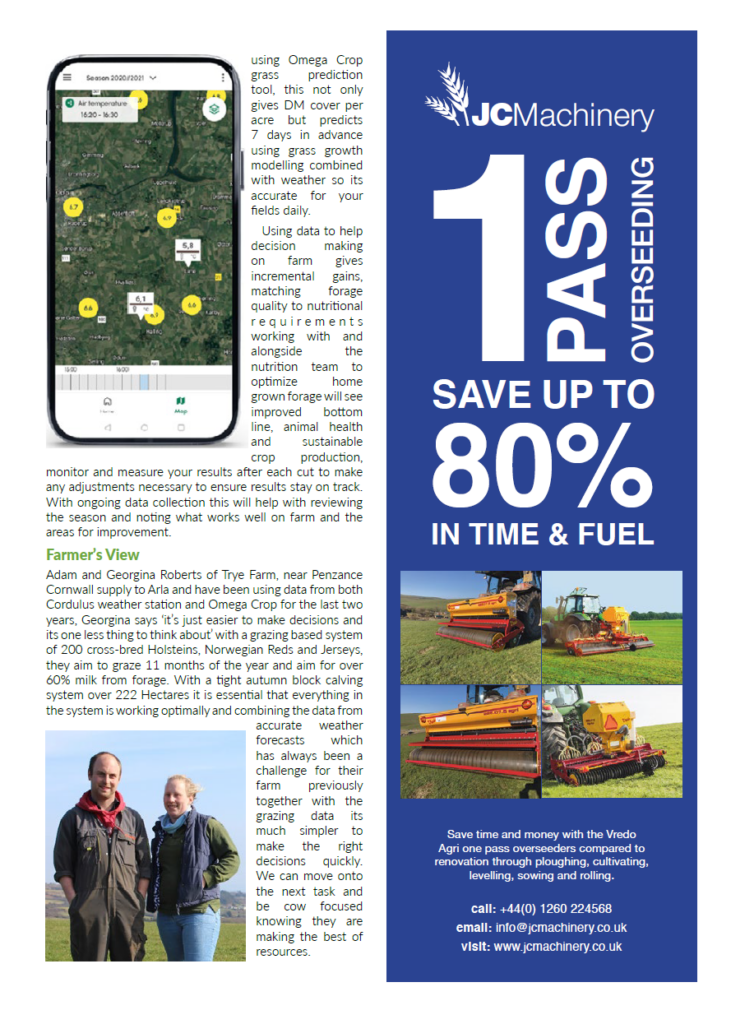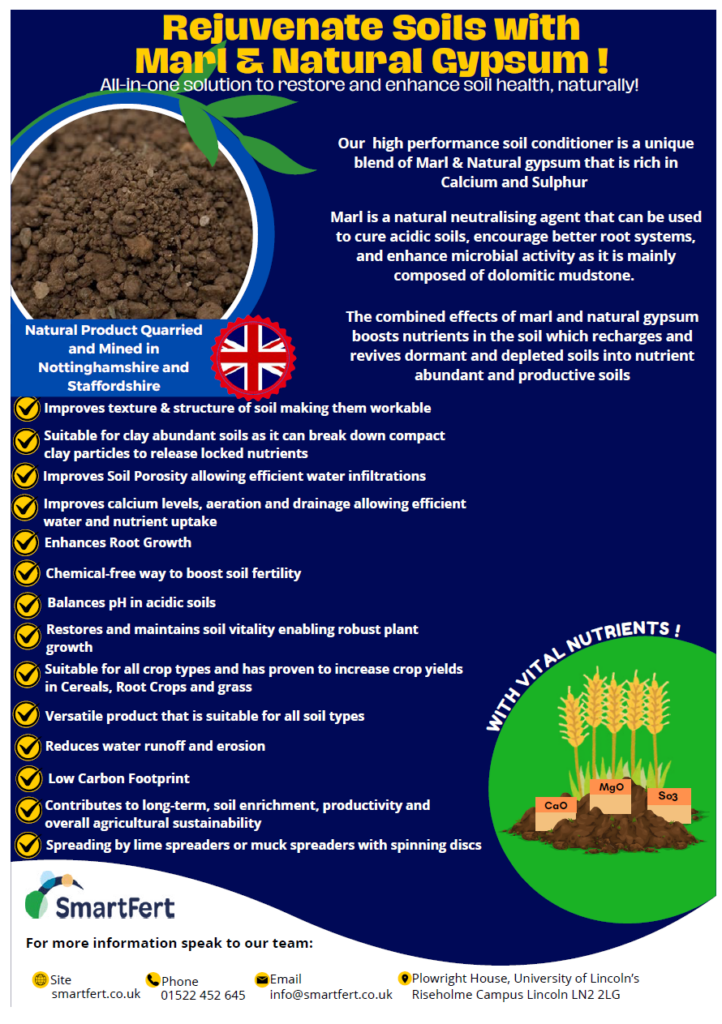Improving quality and producing the right quantity for the animal numbers on farm takes planning and it starts with the soil, test so that you know what you already have on farm in the soil, in the slurry/FYM means than when the conditions are right the correct amount of nutrients can be applied to the grass. Digging a hole to assess compaction coming into Spring and addressing it at the right depth and timing can improve yields by up to 20% and soil health improvements creating resilience through the season, alongside working towards eliminating the causes.
2024 saw low protein levels in grass and silage, low levels of crop nutrition, following extremely high levels of rainfall the season started off with low soil nitrogen, this compounded by the difficulty in applying fertiliser and slurry due to wet ground meant that the season was late starting, although the grass was still growing generally it was poorer quality. To mitigate this having a plan to get some fertiliser and/or slurry out early if it is dry will encourage early growth, fresh grass testing can give a good indication of where the nutrition is alongside walking the fields in February. Having your Nutrient Plan ready to go and deciding on cutting date at this point will mean that you are setting your goals and then when the soil is warm enough to apply nitrogen you can adjust the amount to ensure you are nitrate free by the planned 1st cut date. If using contractors get them booked early as early as possible to take advantage of fast-growing grass in the Spring, getting two cuts in before the end of May will increase the quality of the cuts and whether you are planning 3, 4 or 5 cuts whatever the season brings the energy and protein is banked in the clamp for winter. Multi cut does reap rewards when it comes to increasing quality and quantity of silage and gives more chances to get it right, focussing on ensuring top quality grass silage also has financial benefits. The numbers will be individual to each farm but in every case increasing ME/kg of Dry Matter will improve the bottom line, each mouthful eaten has increased energy density meaning more return on investment from home grown forage, focus on yield of energy per hectare, if the numbers are not where you want them implement change to improve it, whether that’s improving the grass leys to new varieties, preserving the energy in the clamp using a quality silage additive, or changing the maize variety to early harvest early with higher starch.

Using technology to help with decision making at each step of the process backs up application of fertiliser, for example Cordulus weather stations have soil temperature readings so knowing if the timing is right for the first application of Nitrogen and ensuring that the forecast is accurate to your geography is not only better for the crop but also for environmental considerations and reducing waste of valuable resources. The use of accurate data enables decision making on a daily basis to get the most of on-off grazing on the shoulders of the season, maximising every opportunity to graze grass is another way to reduce costs and optimise the resources already available on farm, if the winter is mild and the grass is continuing to grow there is a risk of too much cover in the fields which will reduce quality, on-off grazing will help avoid poaching fields improving the longevity of the sward. With grazed grass still the most cost-effective way to feed animals every quality graze is beneficial to the bottom line, AHDB research says that for a 100 cow suckler herd an extra day at grass is worth an extra day at grass is worth £125 per day, for dairy cows that return goes straight in the tank at reduced cost. Knowing what is in the field can be made easier by using Omega Crop grass prediction tool, this not only gives DM cover per acre but predicts 7 days in advance using grass growth modelling combined with weather so its accurate for your fields daily.

Using data to help decision making on farm gives incremental gains, matching forage quality to nutritional requirements working with and alongside the nutrition team to optimize home grown forage will see improved bottom line, animal health and sustainable crop production, monitor and measure your results after each cut to make any adjustments necessary to ensure results stay on track. With ongoing data collection this will help with reviewing the season and noting what works well on farm and the areas for improvement.
Farmer’s View

Adam and Georgina Roberts of Trye Farm, near Penzance Cornwall supply to Arla and have been using data from both Cordulus weather station and Omega Crop for the last two years, Georgina says ‘it’s just easier to make decisions and its one less thing to think about’ with a grazing based system of 200 cross-bred Holsteins, Norwegian Reds and Jerseys, they aim to graze 11 months of the year and aim for over 60% milk from forage. With a tight autumn block calving system over 222 Hectares it is essential that everything in the system is working optimally and combining the data from accurate weather forecasts which has always been a challenge for their farm previously together with the grazing data its much simpler to make the right decisions quickly. We can move onto the next task and be cow focused knowing they are making the best of resources.


